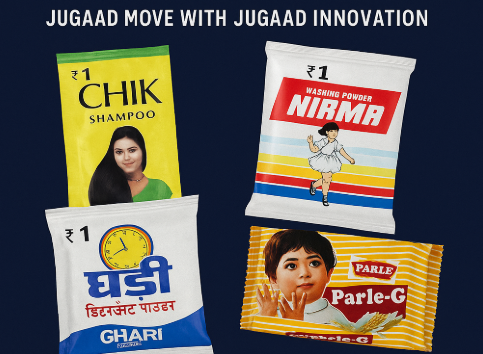SUMMARY POINTS
- The Rs 1 strategy made products affordable in low-income, rural areas long before MNCs entered.
- Jugaad innovation helped Indian companies reach Bharat—beyond urban metros—through smart packaging and pricing.
- Brands like Chik Shampoo, Ghari Detergent, Parle-G, and Nirma mastered this model.
- This pricing wasn’t just cheap—it was deeply strategic, built on distribution, trust, and value.
The Power of the Rs 1 Idea: Jugaad at Its Best
In rural India, price is not just a factor—it’s a barrier or a bridge.
Before foreign brands even began drafting rural entry plans, Indian companies were selling shampoo sachets, biscuits, and detergent for just Rs 1.
What looked like “cheap” to outsiders was, in fact, strategic innovation.
This move built brand loyalty, habit formation, and massive distribution networks in India’s real heartland.
Case Study: Chik Shampoo & the Sachet Revolution
Back in the 1980s, CavinKare’s Chik Shampoo couldn’t compete with giants like HUL’s Clinic Plus—until it repackaged the product into Rs 1 sachets.
This did three things:
- Removed price friction for rural customers.
- Allowed first-time users to “try before loyalty.”
- Made shampoo as accessible as a cup of tea.
Result?
Sales exploded in villages and small towns, eventually forcing even global players to follow suit.
ALSO READ: From Fast Fashion to Data Personalization: Global Brand Strategies Indian Founders Must Adopt
Case Study: Parle-G—India’s Biscuit for Everyone
In every corner shop, you’d find Parle-G’s tiny packs for Rs 1.
This strategy helped:
- Reach school children and low-income families.
- Position Parle-G as an everyday essential, not a luxury.
- Create mass brand recognition with minimal ad spends.
Even today, Parle-G sells over 400 crore biscuits a month, thanks to this foundational pricing model.
Ghari Detergent & Nirma: When Affordability Beats Advertising
Unlike premium brands that relied on flashy commercials, Nirma and Ghari focused on:
- Affordable sachets (Rs 1–2)
- Regional distribution networks
- Word-of-mouth marketing in Tier 2 and Tier 3 cities
Ghari Detergent overtook Surf Excel in market share—not because of better branding, but because of better access.
ALSO READ: How AI is Powering Startup Growth: Real-World Examples and Future Trends
What Made This Jugaad Innovation Work?
This wasn’t just pricing. It was a well-calculated strategy built around:
- Unit economics: Sell smaller, cheaper packs to increase volumes.
- Logistics & supply chain: Focus on rural kirana stores, not supermarkets.
- Trust through presence: Regular visibility at paan shops, bus stands, and village fairs built organic brand loyalty.
What Can Today’s Startups Learn?
If you’re building for Bharat, not just India:
- Think accessibility-first: Rs 1, Rs 5, Rs 10 price points still dominate rural wallets.
- Build for habit, not hype: Products that solve daily problems (cleaning, hunger, hygiene) will always win.
- Don’t underestimate local distribution networks—they’re more powerful than digital ads in these areas.



